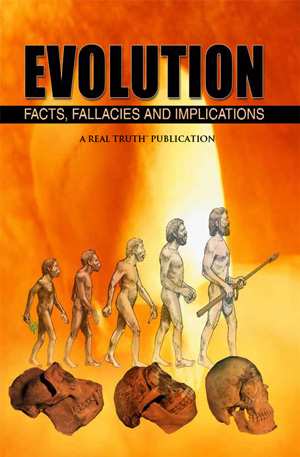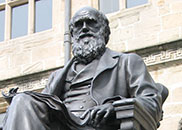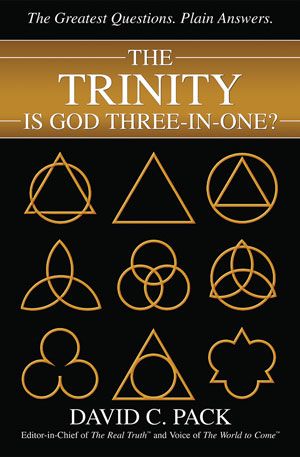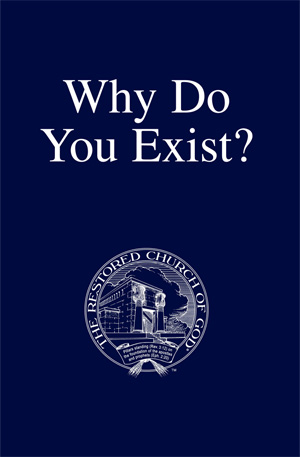The story of evolution continues. Next we will look at two more assumptions that are flimsy when carefully inspected.
At the heart of the evolution teaching is the assumption that mutations produce more advanced traits or characteristics. However, all geneticists admit that this requires new information.
The blueprint for a living organism is locked inside its DNA. For cells to develop and organs to form, this detailed information is required. For different types of cells to appear, new information is needed—the blueprint must be expanded. Evolutionists understand this. To explain the infusion of new information, they have put their hopes in mutations—random shifts within genes or chromosomes that produce new, inheritable traits.
This is fraught with problems.
The first problem is that nearly all mutations are negative in effect.
As discussed earlier, inferior organisms (such as those with negative mutations) are removed by the process of natural selection. This is also true of what are termed “neutral” mutations. Natural processes are designed to eliminate defects from the gene pool. In the light of proper interpretation of natural selection, consider the following from the head of the international Human Genome Diversity Project, evolutionist Luigi Cavalli-Sforza: “Evolution also results from the accumulation of new information. In the case of biological mutation, new information is provided by an error of genetic transmission (i.e., a change in the DNA during its transmission from parent to child). Genetic mutations are spontaneous, chance changes, which are rarely beneficial, and more often have no effect, or a deleterious one. Natural selection makes it possible to accept the good ones and eliminate the bad ones” (Genes, Peoples, and Languages, emphasis added).
We have already shown that natural selection does “eliminate the bad.” In no way, shape or form has it been proven to “accept the good ones.”
We can again play “let’s suppose.” Imagine that “positive mutations” are accepted and retained. Would such mutations explain the appearance of new species? This idea is at the core of evolution, so proving that positive, sustainable mutations can result in a new species is critical.
An often-cited example is that of antibiotic resistance in bacteria. It is purported that bacteria, through mutations, adapt to antibiotics. However, as the following quote asserts, what actually occurs is an information loss—not a gain: “In no known case is antibiotic resistance the result of new information. There are several ways where an information loss can confer resistance” (Refuting Evolution).
A simple analogy: Imagine all of the elements needed for a functioning dimmable light. There are electricity, wires, a potentiometer (controlling electricity flow), a switch, and a light bulb. These were all designed to function in a specific way. If the device controlling the flow of electricity were removed from the system, the light would get much brighter. The room appears better lit and it seems like the entire system has improved with the loss of a device (information). This may seem like an improvement.
However, the one who designed the system would know that this change stresses the system. Each component was designed to handle a certain amount of electricity. While the boost in current may not appear to be a problem at first, over time, the circuit will overload and stop functioning completely. So is the case with mutations. Even though something may appear to be an improvement (as in the case with antibiotic-resistant bacteria), the overall “health” of the organism is diminished.
Evolution cannot sustain itself with the loss of information. The result would be little then no information. The only way higher life-forms could develop would be with more—in fact, much more—information. For instance, imagine a fish “evolving” into a bird. While this sounds ludicrous on its face, it is considered a valid possibility in evolution. How could all the necessary changes to skin, bones, organs, limbs, etc., develop without new information?
Regardless of one’s belief concerning life’s origin, most understand that new information is required for more advanced life-forms. And, conversely, any information already present must be sustained. Ultimately, the continued loss of genetic information will result in the destruction of the life-form—not an improvement!
Finally, regarding the formation of new forms of life, British physicist Dr. Alan Hayward stated: “Genes seem to be built so as to allow changes to occur within certain narrow limits, and to prevent those limits from being crossed. To oversimplify a little: Mutations very easily produce new varieties within a species, and might occasionally produce a new (though similar) species, but—despite enormous efforts by experimenters and breeders—mutations seem unable to produce entirely new forms of life” (Creation and Evolution: The Facts and the Fallacies, emphasis added).
Yet every day, millions of children are taught that mutations—defects—have resulted in millions of species of plants and animals and, ultimately, their existence.
Real Record of the Rocks
Often, media outlets run stories about new paleontological discoveries. These could be fossils dated millions—even hundreds of millions—of years old. Usually, these reports are accompanied by colorful renderings of the creature as it may have once appeared.

Source: Thinkstock
Most assume that such drawings are based on whatever is the discovery. They seem to be able to determine minute details needed to produce amazing illustrations. Surely, this must be based on mountains of evidence and research that have been cross-checked with past discoveries. By now you may have begun to develop a bit of skepticism. If so, you will not be surprised that the “facts” used to prove and illustrate these “ancient” creatures are based on little more than bone shavings, bad science, and invalid assumptions.
Despite all the splash and splendor that accompany such discoveries, the evidence behind them is more artistic and creative than scientific and factual.
To understand why evolutionists have become so creative with the fossil record, you must first understand the gaps in it. This record, once hoped to be the glue that bonded all aspects of evolution, has torn it apart. The fossil record is separated into certain eras—or strata. Each of these eras contain certain types of creatures, and is thought to be specific to a period in history. For instance, the Cambrian stratum is dated to about 530 million years ago (according to evolutionist dating methods).
The gap in the fossil record creates two interrelated problems for evolution.
The first problem lies in that, out of nowhere, fully formed creatures appear in the fossil record. The Cambrian era, for example, contains the oldest known vertebrates. However, as stated by evolutionist Richard Dawkins of Oxford University: “We find many of them already in an advanced state of evolution, the very first time they appear. It is as though they were just planted there, without any evolutionary history” (The Blind Watchmaker).
Indeed, “just planted there”—or, better phrased, they were put there! The fossil record does not show the developmental stages of any creature; they all appear to be “just planted there.”
The second issue is related to the lack of any transitional forms. World-famous evolutionist and paleontologist Dr. Simpson freely stated: “This regular absence of transitional forms is not confined to mammals, but is an almost universal phenomenon, as has long been noted by paleontologists. It is true of almost all orders of all classes of animals…and it is apparently also true of the analogous categories of plants” (Tempo and Mode in Evolution).
Just five years later, Dr. Simpson was forced to admit, “It is thus possible to claim that such transitions are not recorded because they did not exist” (The Meaning of Evolution).
The lack of evidence has caused some evolutionists to adopt new versions of evolution. Others continue to embrace the idea of gradual transitions, asserting that transitional fossils have not been found yet, and will be discovered in the future. Not only is this the logical fallacy of argument to future, it ignores a well-established pattern of discovery.
Another analogy makes this clear. Imagine an opaque jar full of hundreds of marbles. Slowly, one by one, the marbles are removed. Each is examined for color and texture. At first it would be just as probable that each marble could be red, blue, yellow or any other color. However, if over time, only red marbles were removed from the jar, the natural conclusion would be that the jar is full of red marbles. Of course, a new color could be removed from the jar, but as more and more red marbles were removed, this would become less and less likely.
This illustrates what is found in the fossil record. In this case, well over a century of discoveries have repeatedly demonstrated there are only “red marbles.” There will be no “magic fossil” to change this, even though some scientists have tried to create such an artifact from tiny bone fragments.
Artistic Science
One such supposed discovery is worth reviewing. It received television coverage and was featured in National Geographic. Scientists believed they had found a “walking whale,” presumed to be a missing link between land mammals and whales. It led paleontologist Daryl Domning to state, “We essentially have every stage now from a terrestrial animal to one that is fully aquatic” (National Geographic).
The following month, impressive renderings of this walking whale appeared in the same magazine in the article “Evolution of Whales.” It was now settled—the whale’s evolutionary path had been established and the theory had been proven true.
Or had it?
All the excitement arose from nothing more than part of a jawbone and some skull fragments—nothing else! Creative minds drew a completely fictional rendering from almost no evidence. This could be compared to finding a scrap of metal and then asserting that you can render the exact replica of the building from which it came. This is beyond ridiculous!
Later, a more complete skeleton of this same creature was discovered. With more facts in place, it was obvious that this creature was solely a land animal. However, the later revelation received very little media attention and no retraction was published!
This is not the only example of data misconstrued to fit within the theory of evolution. The vast number of misrepresentations has led to statements such as this: “What the ‘record’ shows is nearly a century of fudging and finagling by scientists attempting to force various fossil morsels and fragments to conform to Darwin’s notions, all to no avail. Today the millions of fossils stand as very visible, ever-present reminders of the paltriness of the arguments and the overall shabbiness of the theory that marches under the banner of evolution” (Algeny).
The honest approach would be for evolutionists to admit their mistakes and dismiss the theory. Instead of admitting the errors in gradual evolution, scientists proposed an even more ludicrous idea: “punctuated equilibrium.”
While many still hope for the long-sought undiscovered transition fossils, punctuated equilibrium has gained much traction within the evolution community. The theory states that global catastrophes accounted for the sudden leap in evolution. These events would cause sudden and drastic “systemic mutations.” What the theory fails to address is that such mutations would devastate an organism. In addition, earth-shaking events would not provide the new—and vast—supply of information needed for the complexity of life to increase.
The concept of punctuated equilibrium has also been called “hopeful monsters.” For advanced life to appear out of the ashes of an enormous volcanic eruption or catastrophic asteroid impact—as opposed to the natural result, the destruction of life—is definitely hopeful!
Sad to say for evolutionists, “…these theories amount only to giving more or less fancy names to imaginary phenomena; no one has ever observed the occurrence of a ‘systemic mutation’” (Plant Life).
This conclusion is further supported by evolutionists G. Ledyard Stebbins and Francisco J. Ayala: “…the occurrence of systemic mutations, yielding hopeful monsters, can be excluded in view of current genetic knowledge” (Science).
So how do evolutionists explain the fact that neither gradual evolution nor punctuated equilibrium is consistent with the geological record? And how do they account for the sudden explosion of life in the first place?
They do not, because they cannot!
The body of evidence has led many scientists like geologist William Dawson to conclude, “…the record of the rocks is thus decidedly against evolutionists” (Nature and the Bible).
So paleontology is not a field of science in which evolutionists can find refuge or hope to repair their broken theory.
The Dating Dilemma
One of the most notable problems with the fossil record is related to how fossils are dated. Like many “sciences” dealing with evolution, there are sweeping generalizations and assumptions applied. Typically, two types of dating are used—radiocarbon and associative.
The first and most known, radiocarbon dating, measures the ratio of non-radioactive carbon (carbon-12) to radioactive carbon (carbon-14) to determine the age of the object.
In summary, scientists have discovered that when cosmic rays come into contact with Earth’s atmosphere, they react with nitrogen-14 and create carbon-14. In turn, carbon-14 then reacts with oxygen and produces carbon dioxide. Plants take in carbon dioxide. Animals in turn consume plants and ingest the carbon dioxide. When plants and animals die, their decay changes carbon-14 back into nitrogen-14. And hence, the cycle continues.
For example, a sample of petrified wood could be measured. As a living tree, its wood would have had a similar ratio of carbon-14 to carbon-12 as the air surrounding it. However, after death, its decomposition would slowly release carbon-14 into the air, while the carbon-12 remained constant.
If a scientist knew the ratio of carbon-14 to carbon-12 in the air when a tree was alive, and the rate at which carbon-14 was released from the sample, he could theoretically calculate the tree’s age. Scientists have generally assumed that the ratio of these isotopes has remained constant in the atmosphere.
The problem? Evidence demonstrates dramatic shifts in the ratio!
Notice what Andrew A. Snelling wrote in a research paper presented at the Third International Conference on Creationism: “Not only then has open system behavior of these isotopes been demonstrated, but apparent ‘isochrons’ and their derived ‘ages’ are invariably geologically meaningless. Thus none of the assumptions used to interpret the U-Th-Pb radiometric system used to yield ‘ages’ can be valid” (Institute for Creation Research).
No matter how vehement are the confusing and misguided attempts to explain away the variations of these isotopes, there are variations. But findings are cross-referenced with items that have already been improperly dated. This makes it possible to declare the radiocarbon date “reasonable,” based on previous findings, which are also based on other findings. And so the cycle continues.
This is problematic because most samples used for comparison were also dated using radiocarbon techniques! Remembering the logical fallacies covered in Part One, this is an example of begging the question. Basing a conclusion on an assumption is not only unscientific, it is dishonest!
For the last century, science has used radiocarbon analysis to create a flawed chart on which to compare other finds. When a new fossil is discovered, it is compared to existing fossils at that stratum. It is assumed that millennia of time compressed the strata and, therefore, all fossils found at a particular layer are of similar age. Faulty radiocarbon tests further “validate” the date and the sample is used as proof.
Much more could be said about these dating methods. But they are far from reliable. It is troubling that scientists base so much on an unsound and easily manipulated method.
As the underpinnings of evolution are discredited, it continues to come apart at the seams. But there is much more to consider.


































